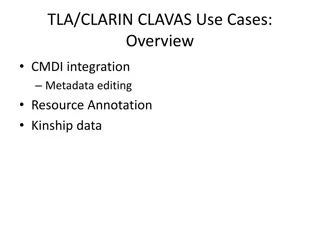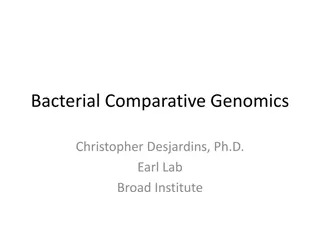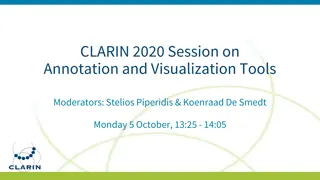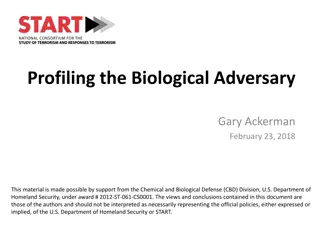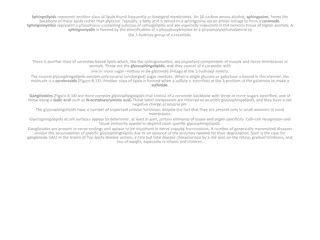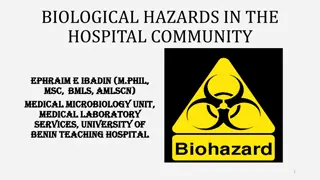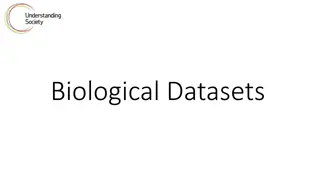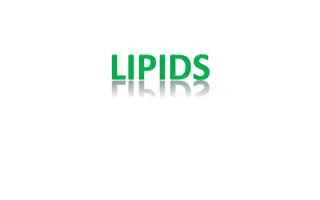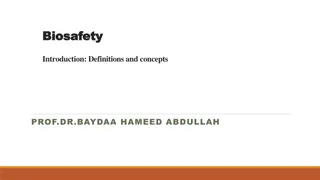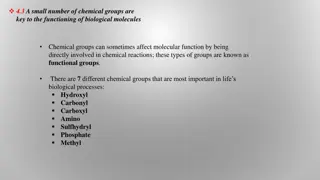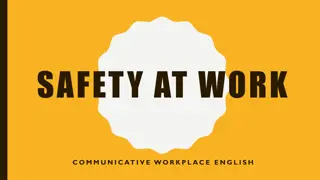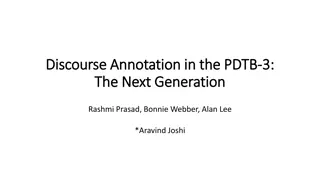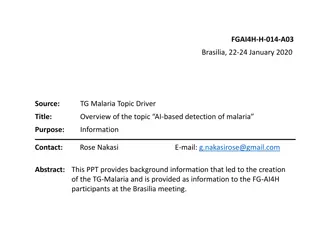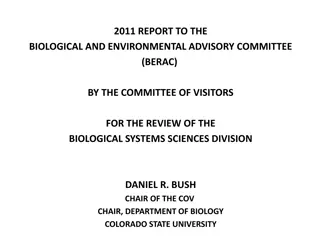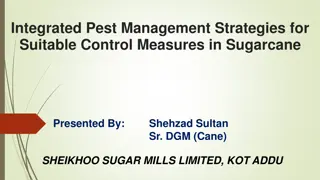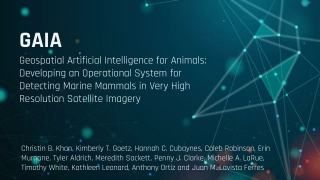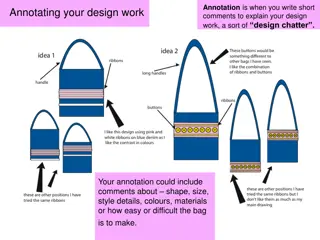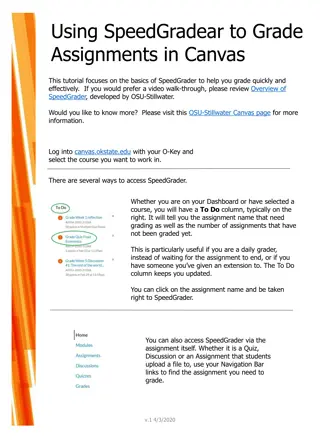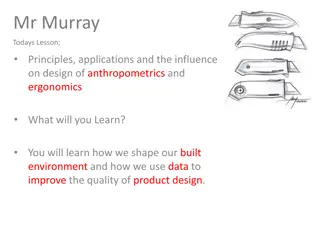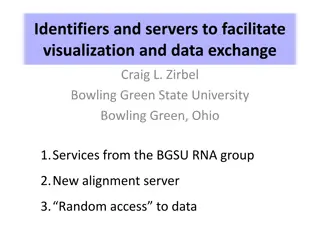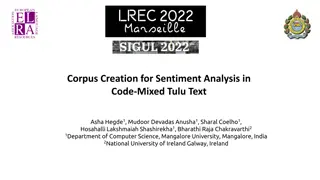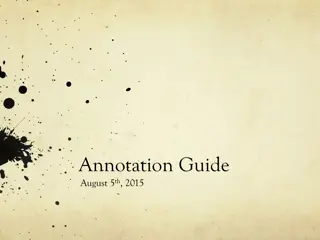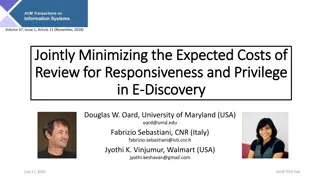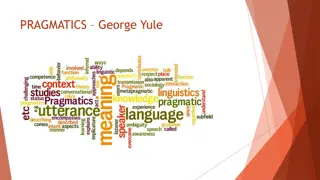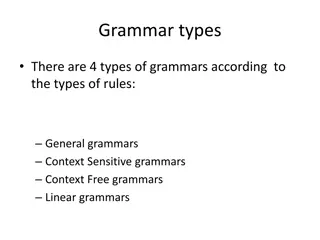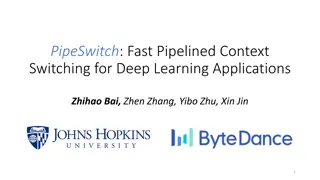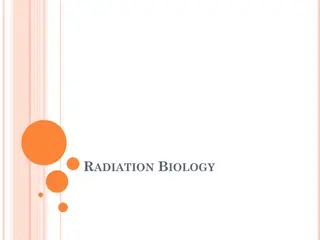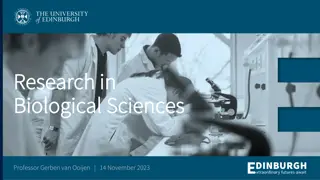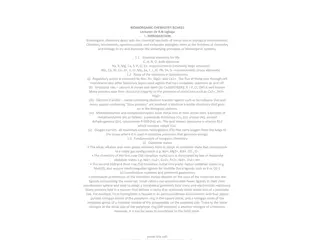Enhancing Biological Context Annotation for AOPs: A Comprehensive Approach
Manual creation and homogenization of biological context annotations for AOPs and key events help in interlinking different AOPs to understand possible connections between pathways. The process involves compiling AOPs for various organisms, including humans and model species, annotating key events with justifications, and ensuring all AOPs have annotated key events. The data shows significant progress with a high percentage of key events annotated across different systems and organ/tissue types.
Download Presentation

Please find below an Image/Link to download the presentation.
The content on the website is provided AS IS for your information and personal use only. It may not be sold, licensed, or shared on other websites without obtaining consent from the author. Download presentation by click this link. If you encounter any issues during the download, it is possible that the publisher has removed the file from their server.
E N D
Presentation Transcript
Biological context Biological context annotation annotation
WHAT? WHAT? Manual creation and homogenization of the biological context annotation for AOPs and key events from the AOP wiki AND WHY? AND WHY? To be able to interlink and contextualize different AOPs, and to better understand the possible connections between different pathways
SORTING THE DATA SORTING THE DATA We compiled all the relevant AOP's for human and some model organisms This included... Mammalia Bos taurus Canis lupus famialiaris Felis catus and more... Homo sapiens Rodentia Mus musculus Rattus norvegicus Mesocricetus auratus and more Cataarrhini Macaca fascicularis Macaca mulatta Vertebrata
OVERVIEW OVERVIEW THE PROCESS THE PROCESS STEP 3: STEP 1: STEP 2: If needed, look for more information ( AOP wiki, PubMed ) Check the already given information on the key event Annotate accordingly The key event name given The already given annotation justification: OTHER given given justification: justification: And a link to the source! LOCATION NAME
BEFORE BEFORE NOW NOW 14 System types 521 Key events linked to 65 425 Key events linked to Organ/tissue types 69 Cell types 561 Key events linked to 8 39 Key events linked to Cell component types
Now 809 out of 898 Key events have been annotated A total of 185 AOPs And all of the AOPs have an annotated key event linked to them!
65 311 SYSTEM SYSTEM 13 digestive system 31 nervous system 39 157 reproductive system cardiovascular system 55 immune system respiratory system urinary system 63 endocrine system exocrine system 133 integumentary system muscular system visual system 98 skeletal system auditory system 109
2 2 222 222 21 11 111 11 1 1 111 1 1 0 0 0 0 0 0 0 0 0 0 0 0 0 0 0 0 0 0 0 0 0 0 0 0 2 0 0 0 0 0 0 0 0 0 0 0 0 0 0 0 0 0 3 3 3 6 2 ORGAN ORGAN /TISSUE /TISSUE 3 54 liver 76 8 144 9 brain 9 10 testis 11 11 nervous tissue 14 lung 15 ovary 68 25 kidney 27 blood 27 47 thyroid gland 30 39 34 38
11 11 1 1 3 1 4 1 1 1 1 1 2 11 1 22 1 3333 1 1 1 11 1 1 1 1 1 1 4 1 1 2 22 5 eukaryotic cell 2 2 2 5 4 44 5 CELL CELL hepatocyte 555 7 77 neuron 8 7 8 Leydig cell 109 thyroid follicular cell 15 epithelial cell 19 415 27 oocyte T cell 41 sperm cell 51 leukocyte macrophage 97 dendritic cell
Data Data- -driven driven annotation annotation
WHAT? WHAT? Enrichment analysis of the Enrichr gene sets and the genes linked to the same key events that were also manually annotated AND WHY? AND WHY? To be able to annotate the key events by matching gene data. This gives us a different on-look to the subject and supports the manual context annotation
OVERVIEW OVERVIEW THE PROCESS THE PROCESS STEP 3: STEP 1: STEP 2: Modify the already existing code to match the current data Run Translate the gene ID's to Ensembl ID's the enrichment process and save the results
COMPARISONS COMPARISONS KEY EVENT INFORMATION MANUAL ANNOTATION AN EXAMPLE OF THE DATA-DRIVEN ANNOTATION (HUMAN GENE ATLAS)



